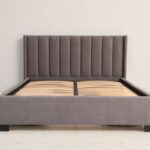The idea of owning a home is a dream for many people, but the cost of traditional houses can often be overwhelming. Fortunately, modular homes present a viable alternative. With their efficient design, fast construction process, and more affordable price tag, modular homes are becoming an increasingly popular choice for prospective homeowners. But how much do modular home prices actually cost, and what factors influence these costs? This article will explore the ins and outs of modular home prices to help you make a more informed decision before embarking on your journey to homeownership.
What Are Modular Homes?
Before delving into modular home prices, it’s essential to understand what modular homes are and how they differ from traditional homes. Modular homes are pre-fabricated structures that are built off-site in sections, or modules, and then transported to the home site where they are assembled. Unlike mobile homes, modular homes are permanent structures and meet the same building codes and standards as traditionally constructed homes. The primary difference lies in the way they are built: modular homes are assembled in a factory, reducing construction time and often minimizing labor costs.
The Cost of Modular Homes
One of the biggest selling points of modular homes is their cost-effectiveness. On average, modular homes tend to cost significantly less than their site-built counterparts, with modular home prices ranging between $50 to $100 per square foot. However, the total cost can vary depending on various factors such as the size of the home, design choices, materials, location, and additional customization options.
While the cost per square foot may seem like a relatively low starting point, it’s important to consider the full scope of the project when calculating modular home prices. Beyond the base price of the home itself, there are several additional costs associated with site preparation, transportation, foundation installation, and finishing. Depending on your location, the cost of land can also add a substantial amount to the overall project.
Factors That Affect Modular Home Prices
Several key factors can influence the final cost of a modular home. It’s essential to understand these elements so you can better estimate the overall price and make informed decisions throughout the process.
Size and Design
The size of the home is one of the most significant factors affecting modular home prices. As a general rule, the larger the home, the higher the overall cost. However, larger homes may also offer more space and flexibility, making them a good investment for those with growing families or a desire for extra room.
Design is another major consideration when it comes to modular home prices. Basic designs tend to be more affordable, while custom designs with unique features such as vaulted ceilings, larger windows, or high-end finishes can increase the overall price. Keep in mind that modular homes are highly customizable, but adding specialized features may add to both the initial cost and the time required to complete the project.
Location and Site Preparation
The location of your modular home plays a crucial role in determining the price. The cost of land, local building regulations, and logistical considerations such as accessibility to transportation routes can all impact modular home prices. In some areas, the cost of land can exceed the price of the home itself, particularly in high-demand locations. If the land is located in a remote or hard-to-reach area, transportation costs may also add significantly to the price.
Site preparation is another important factor. The land must be cleared, leveled, and prepared to support the foundation. If there are challenges such as difficult terrain or soil issues, this can raise the cost of preparing the site. Additionally, the type of foundation required—whether a crawl space, slab, or full basement—can also affect the overall price.
Materials and Finishes
The quality of materials used in the construction of a modular home has a direct impact on modular home prices. Basic materials and finishes such as vinyl siding, carpet flooring, and standard kitchen appliances can keep costs lower. However, opting for high-end materials such as stone countertops, hardwood floors, or custom cabinetry can significantly increase the price.
Another factor to consider is energy efficiency. Many modern modular homes are designed to be energy-efficient, using advanced insulation techniques, energy-efficient windows, and green building materials. While these features may come at a higher initial cost, they can offer long-term savings through reduced energy bills.
Transportation and Installation
Once the modules are constructed in the factory, they must be transported to the building site and assembled. Transportation costs can vary depending on the distance from the factory to the site, with longer distances leading to higher shipping fees. In some cases, specialized equipment may be required to transport the modules, further adding to the cost.
Once on-site, the modules need to be carefully assembled and connected. This process requires skilled labor, and the cost of installation can vary depending on the complexity of the project. Some modular homes are more straightforward to assemble, while others may require more intricate work to ensure the modules fit together seamlessly.
Modular Home Price Comparison: Modular vs. Traditional Homes
When comparing modular home prices to traditional site-built homes, the cost savings become apparent. On average, modular homes can be up to 20% less expensive than traditional homes, depending on the region. This price difference is due to the efficient manufacturing process and the fact that modular homes are built in a controlled factory environment, reducing construction time and minimizing labor costs.
Furthermore, because modular homes are built off-site, the construction timeline is significantly shortened. This means that homeowners can move into their new homes more quickly, potentially saving on temporary housing costs during the construction process.
Financing a Modular Home
When it comes to financing a modular home, the process is similar to financing a traditional home. Many lenders offer loans specifically for modular homes, and you can typically apply for a conventional mortgage or government-backed loan such as an FHA or VA loan. It’s important to note that not all lenders may be familiar with the specifics of modular homes, so it’s advisable to work with a lender experienced in this area to ensure a smooth financing process.
The down payment for a modular home typically ranges between 5% and 20%, depending on the loan type and the borrower’s creditworthiness. Interest rates and loan terms for modular homes are comparable to those for traditional homes, making modular homes an accessible option for many prospective homeowners.
Conclusion
In summary, modular home prices offer an affordable and practical alternative to traditional site-built homes. While the cost can vary depending on several factors such as size, design, location, and materials, modular homes generally provide substantial savings compared to their conventional counterparts. By understanding the various elements that influence the price of a modular home, you can better plan your project and ensure that it aligns with your budget and needs. With their quick construction time, energy efficiency, and customizable designs, modular homes offer a unique opportunity for individuals looking to build a quality home without the hefty price tag.







